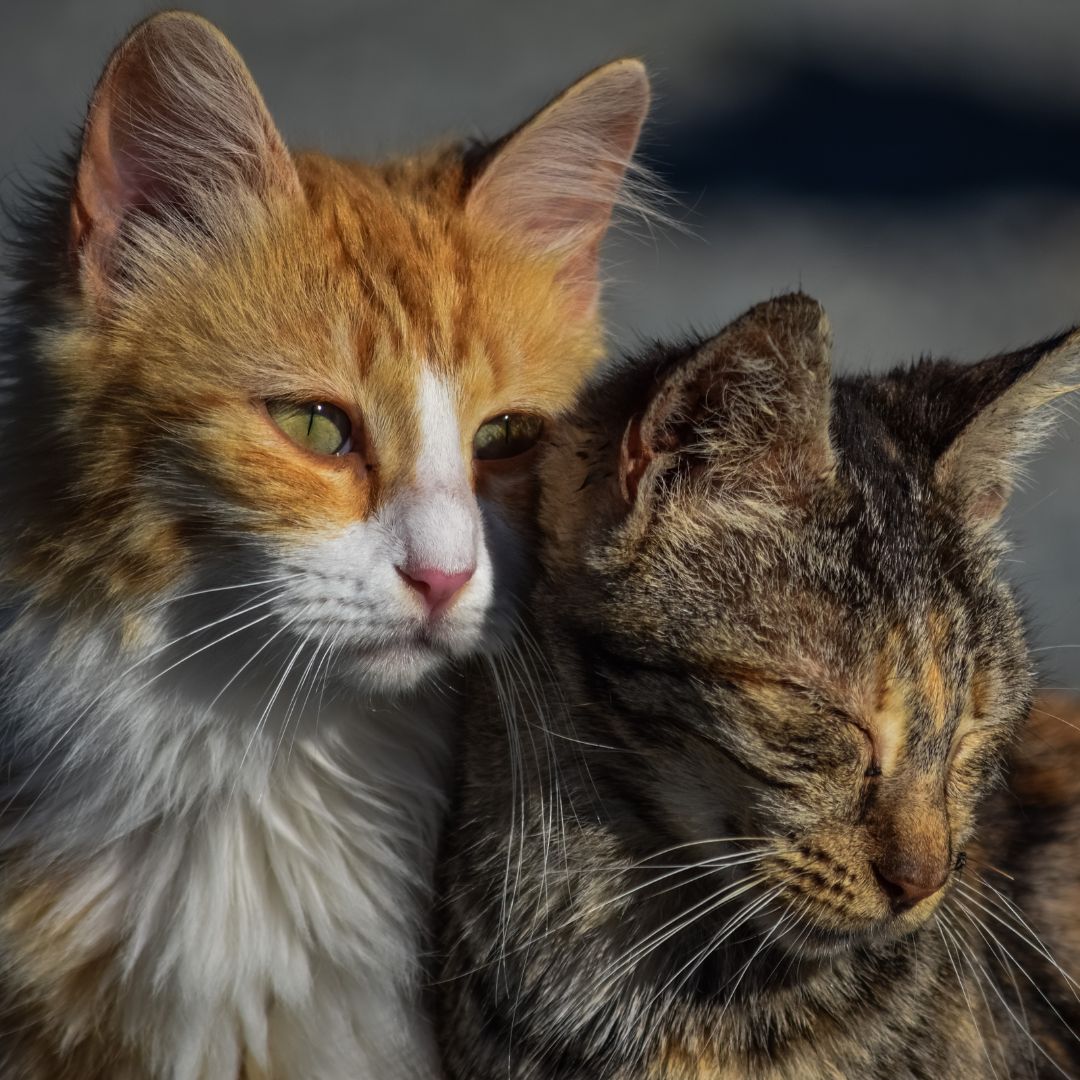
Tips to Introduce Your New Cat to Your Old Cat
Share
Cats possess a strong territorial instinct, which can complicate matters when introducing a new cat into a household. They are naturally inclined to be possessive of their belongings, including their owners and even the smallest items such as food, toys, and bedding.
As responsible pet owners, it's important to minimize the potential for conflict between cats. While it's natural for cats to exhibit aggression when confronted with a new feline in their territory, there are steps you can take to facilitate peaceful coexistence and foster a bond between them without resorting to aggressive behavior.
Introducing Cats: Giving Them Their Space
When bringing a new cat into the household, it's crucial to allow them time to acclimate to their new surroundings. The unfamiliar environment may initially be daunting, leading to feelings of fear or anxiety. To prevent further stress, it's advisable to provide separate spaces for each cat, equipped with all their necessities. This separation allows the new cat to explore and become familiar with its surroundings at its own pace, helping to establish a sense of security and belonging.
Exchanging Scents: Facilitating Familiarity
Before cats directly interact, it's beneficial to introduce them to each other's scents. This can be achieved by exchanging items such as toys, bedding, or utensils between the cats' respective spaces. By incorporating these items into each other's environments, the cats can become acquainted with the scent of their new housemate, fostering a sense of familiarity and reducing potential tension.
Once both cats have grown accustomed to each other's scents and appear comfortable, pet owners can gradually progress to visual introductions, further facilitating a smooth transition and eventual coexistence.
Installing Screen Doors or Baby Gates: Creating Boundaries
During the initial adjustment period, tensions may run high as both cats establish their territories and vie for dominance. To prevent potential clashes, consider installing barriers such as screen doors or baby gates to separate their spaces. These barriers not only prevent direct confrontations but also allow the cats to observe each other from a safe distance, gradually familiarizing themselves with the presence of their new housemate.
Patience Is Key
Building a friendship between cats takes time and patience. It's important to recognize that each cat has its own pace for adjusting to the new dynamic. While one may warm up quickly, the other might require more time to feel comfortable. This gradual process is essential for fostering a positive relationship between the cats.
Face-to-Face Introductions
Only proceed with face-to-face introductions once both cats show signs of decreased aggression, such as ceasing to hiss, snarl, or swipe at each other. A positive indication of their growing comfort is when they begin to sniff or rub against each other without aggression.
In addition to these strategies, implementing small gestures and activities can further strengthen their bond and facilitate their mutual comfort with one another.
Promoting Cat Bonding After Introduction
Treats and Positive Reinforcement:
Cats enjoy attention and praise. Pet owners can utilize treats and compliments to encourage positive interactions between the cats. Rewarding even the smallest efforts to foster friendship between them reinforces desired behavior and encourages continued bonding.
Joint Play Sessions:
Equal playtime with both cats is essential to prevent potential territorial disputes. Engaging in interactive play sessions with both cats simultaneously can be beneficial. Using toys and treats during playtime not only keeps them entertained but also encourages them to interact with each other. As they engage in play together, they become more familiar with each other, facilitating the development of a bond.
By incorporating these strategies into their routine, pet owners can help their cats establish a positive relationship and foster a harmonious environment in the household.
Respect Their Autonomy
It's crucial not to impose interactions between the cats but rather allow them to explore and interact with each other at their own pace. Forcing interactions can cause distress and disrupt the natural bonding process. Letting the cats navigate the household freely encourages them to interact on their own terms, fostering a more genuine and harmonious relationship.
Training for Harmony
Even after the initial adjustment period, conflicts may arise between the cats. Training them to respond to commands can help mitigate potential issues. Teaching commands like "stop" using hand signals or clapping can be effective in diffusing tensions and preventing conflicts. Well-trained cats are better equipped to navigate social situations and resolve conflicts peacefully, contributing to a more peaceful coexistence in the long run.
In conclusion, prospective cat adopters should be ready for the responsibilities and commitment involved in adding another cat to their household. Patience and dedication are key when introducing cats to each other and fostering their relationship. By following the steps outlined earlier and allowing the cats ample space and time to acclimate to one another, potential challenges can be effectively managed. With proper care and consideration, the process of introducing and integrating new cats into a home can be a rewarding experience for both the cats and their owners.
